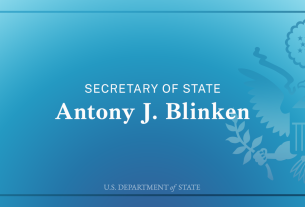Recent breakthroughs in neuroscience sound almost like miracles: neurostimulation techniques that help paralysed patients to walk again, or an implant that could help restore vision to the blind.
These are just two of the many results of the landmark Human Brain Project (HBP), a 10-year-long EU-funded research initiative that has significantly increased science’s understanding of the human brain.
A vast area of research
It is one of the biggest and most ambitious research projects ever funded by the EU, which recently published a comprehensive 10-year assessment of the HBP’s main accomplishments.
Running between 2013 and 2023, the team involved 150 institutions and hundreds of researchers from across 19 countries. But its size and timespan were proportionate to its research focus, said world-renowned neuroscientist Professor Katrin Amunts, who led this ambitious collaboration.
“The human brain is the most challenging and interesting research target – comparable to the universe,” she said. “There isn’t a single lab, or even a country, that has the capacity to comprehensively address the brain’s complexity.”
That is why, according to Amunts, it was a “big advantage” that HBP researchers benefitted from such extensive and long-term EU funding.
“The achievements we have made would not have been possible otherwise.”
Help for millions of people
Brain diseases represent a global challenge, she said, and the accomplishments of the HBP team will help provide better care for millions of people.
More than 3 billion people – or more than 40% of the global population – are affected by neurological conditions, making these the leading cause of ill health and disability, and burdening patients, families and caregivers worldwide.
For Amunts, the answer lies in more research.
“To treat brain diseases more effectively requires better understanding of how the brain functions,” she said.
“
The human brain is the most challenging and interesting research target – comparable to the universe.
Working at the interface of neuroscience and information technology, HBP researchers have shed considerable light on the brain’s structure, function and dysfunction, leading to new applications in medicine and technology.
It has already had a noticeable practical impact. There have been breakthroughs, for instance, in understanding sight.
HBP researchers at the Royal Netherlands Academy of Arts and Sciences have created a device capable of transmitting visual patterns directly to the brain’s visual cortex, paving the way for a future revolutionary method for restoring vision.
Likewise, remarkable advances in neurostimulation are offering new hope for people affected by paralysis.
In Switzerland, a team at the Swiss Federal Institute of Technology in Lausanne developed personalised models for spinal cord stimulation, enabling paraplegic patients to stand and walk again.
Brain atlas
One of the project’s key achievements, according to Amunts, was the creation of the brain atlas, which she likens to Google Maps for the brain.
The atlas maps more than 200 individual brain areas and provides multilevel anatomical reference maps, down to the micrometre level.
“It is completely unique in its features and details. It allows researchers to zoom in and out to see how different assets of the brain are linked,” Amunts said.
This overview is crucial to understanding which brain areas are involved in which function, she said. For instance, when a patient has had a stroke, it allows more detailed information to be shared and enables a more personalised response to the patient’s needs.
The BigBrain section of the atlas was already used in a large clinical trial, the EPINOV study in France, where scientists used personalised brain models to identify the best target areas for epilepsy surgery. This could improve the lives of millions of epilepsy patients who require surgery to alleviate their symptoms.
The personalisation technology for these models was also developed in the HBP, by researchers at the University of Marseille.
Brain-to-computer communication
Beyond health, HBP researchers also made their mark on artificial intelligence (AI), where progress has gone hand in hand with advances in neuroscience. The work of Amunts’ team served as an effective bridge between the two.
New computing methods have thus become tools for brain research, while our improved understanding of the brain is also helping to advance AI technologies, from neuromorphic computing, modelled on the human brain, to cognitive robotics.
“Research in AI, artificial neural networks and neuromorphic computing has direct links to brain research,” said Amunts. “If we have a better understanding of how the brain learns and functions, we can learn how to build more efficient artificial neural networks.”
Open access
For Professor Philippe Vernier, director of the Paris-Saclay Institute of Neuroscience in France, “the HBP has been a true success”.
Vernier, who is also the director of research at the French National Centre for Scientific Research, is leading a follow-up EU-funded research initiative called EBRAINS 2.0 together with Amunts.
The new initiative is an open platform that offers access to all the digital tools, services and datasets developed within the HBP, including the brain atlases.
As the decade-long work by HBP researchers progressed, it became clear to Amunts “that we also had to create a joint digital platform”. For Vernier, having a follow-up EU-funded research project is essential if the scientific community is to reap the benefits of the HBP’s research.
“
We believe we have the responsibility to bring our insights into the clinic and make the lives of patients better.
“It’s important to show what the HBP was able to produce and make it available to the larger scientific community,” he said. “EBRAINS is open to all.”
On the platform, neuroscientists can input and share data and collaborate on brain research.
“It could be a real game-changer,” said Vernier. “The main challenge of brain research is the complexity of the brain. To tackle this, we need to pull together, gather data and shape it into something useful.”
Changing lives
Such a collective effort is necessary for a better understanding of the brain, and also for treating many brain diseases, such as Alzheimer’s, Parkinson’s and schizophrenia.
“By using new tools, we set up the path to better and more personalised treatments for these diseases,” said Vernier.
In short, the EBRAINS research infrastructure aims to safeguard the HBP’s legacy and bring the latest scientific breakthroughs to clinical trials and hospitals.
“The brain is fascinating, and we want to understand its architecture and functions, but we believe we have the responsibility to bring our insights into the clinic and make the lives of patients better,” Amunts said.
Research in this article was funded by the EU’s Horizon Programme. The views of the interviewees don’t necessarily reflect those of the European Commission. If you liked this article, please consider sharing it on social media.



